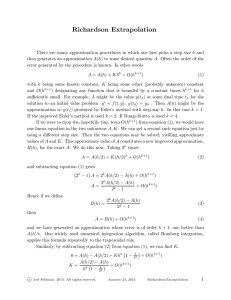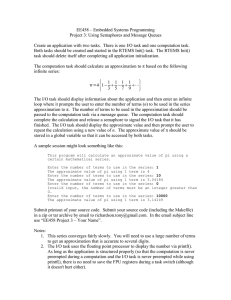Fall 2005 Math 151 Section 4.1
advertisement
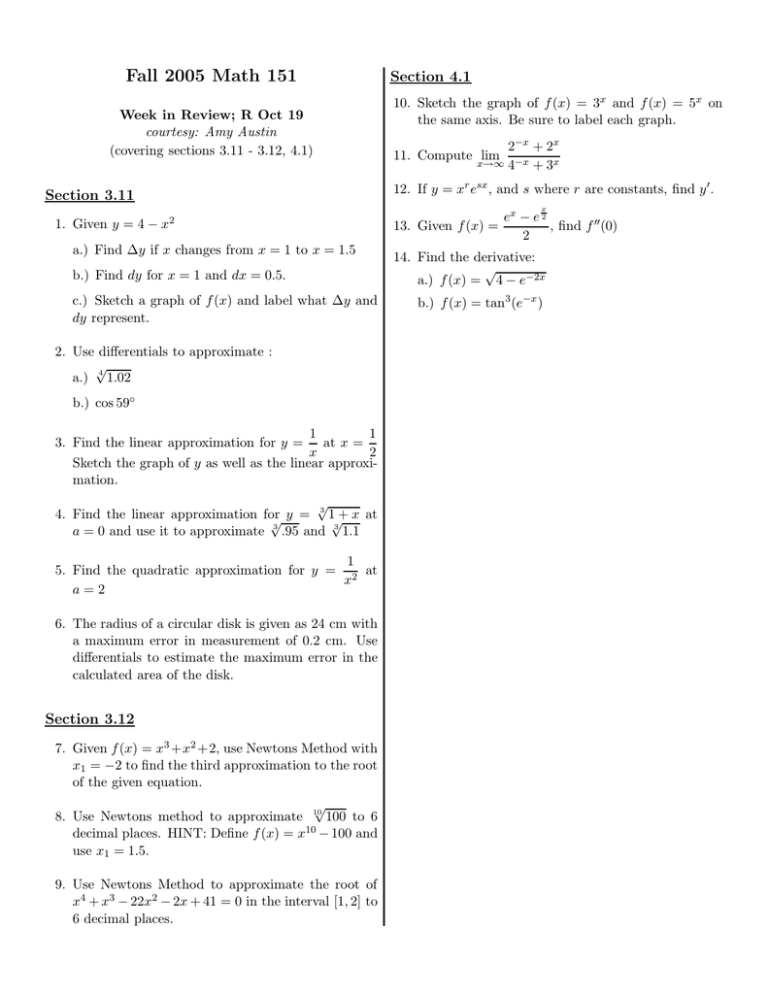
Fall 2005 Math 151 Week in Review; R Oct 19 courtesy: Amy Austin (covering sections 3.11 - 3.12, 4.1) Section 3.11 1. Given y = 4 − x2 a.) Find ∆y if x changes from x = 1 to x = 1.5 b.) Find dy for x = 1 and dx = 0.5. c.) Sketch a graph of f (x) and label what ∆y and dy represent. 2. Use differentials to approximate : √ a.) 4 1.02 b.) cos 59◦ 1 1 3. Find the linear approximation for y = at x = x 2 Sketch the graph of y as well as the linear approximation. √ 4. Find the linear approximation for y = 3 1√+ x at √ a = 0 and use it to approximate 3 .95 and 3 1.1 1 5. Find the quadratic approximation for y = 2 at x a=2 6. The radius of a circular disk is given as 24 cm with a maximum error in measurement of 0.2 cm. Use differentials to estimate the maximum error in the calculated area of the disk. Section 3.12 7. Given f (x) = x3 +x2 +2, use Newtons Method with x1 = −2 to find the third approximation to the root of the given equation. √ 8. Use Newtons method to approximate 10 100 to 6 decimal places. HINT: Define f (x) = x10 − 100 and use x1 = 1.5. 9. Use Newtons Method to approximate the root of x4 + x3 − 22x2 − 2x + 41 = 0 in the interval [1, 2] to 6 decimal places. Section 4.1 10. Sketch the graph of f (x) = 3x and f (x) = 5x on the same axis. Be sure to label each graph. 2−x + 2x x→∞ 4−x + 3x 11. Compute lim 12. If y = xr esx , and s where r are constants, find y 0 . x 13. Given f (x) = ex − e 2 , find f 00 (0) 2 14. Find the derivative: √ a.) f (x) = 4 − e−2x b.) f (x) = tan3 (e−x )
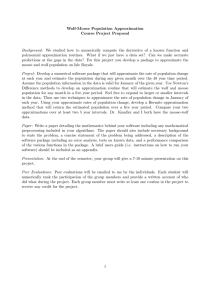
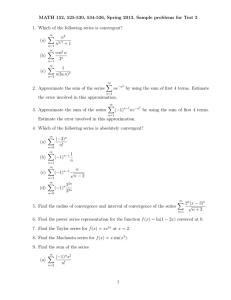
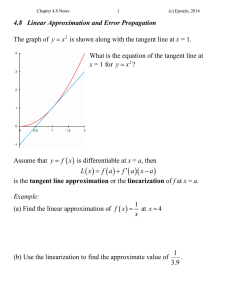
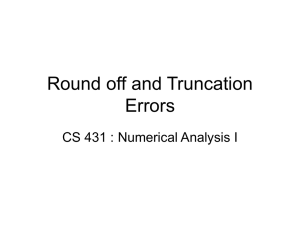
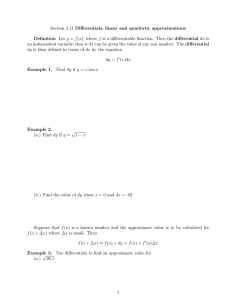

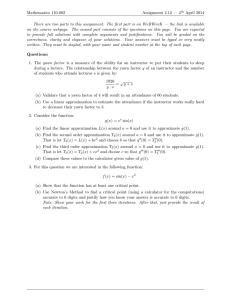
![1 = 0 in the interval [0, 1]](http://s3.studylib.net/store/data/007456042_1-4f61deeb1eb2835844ffc897b5e33f94-300x300.png)

